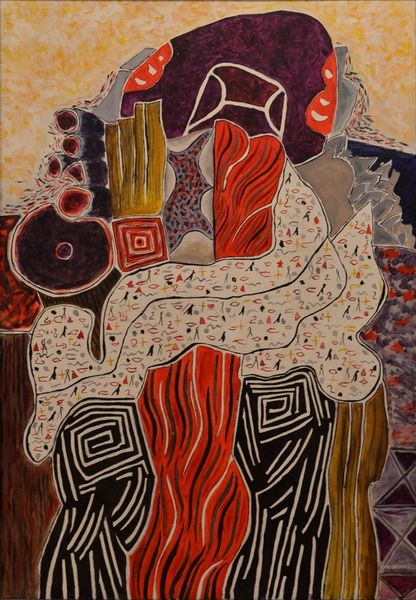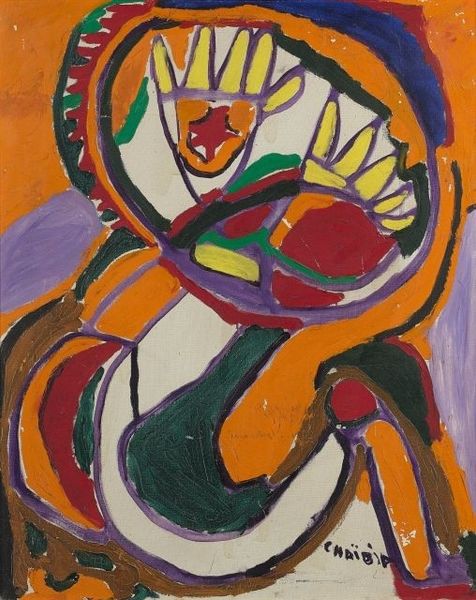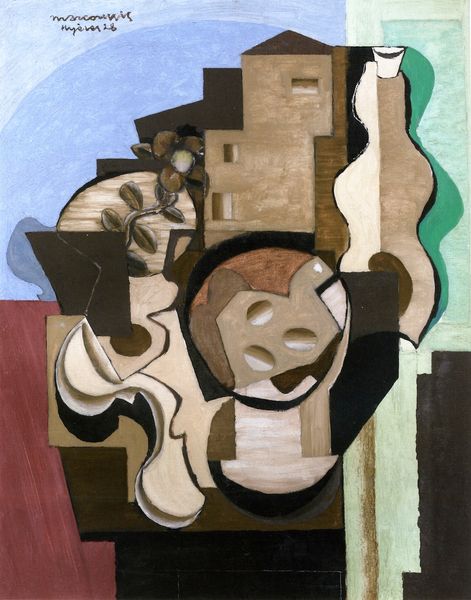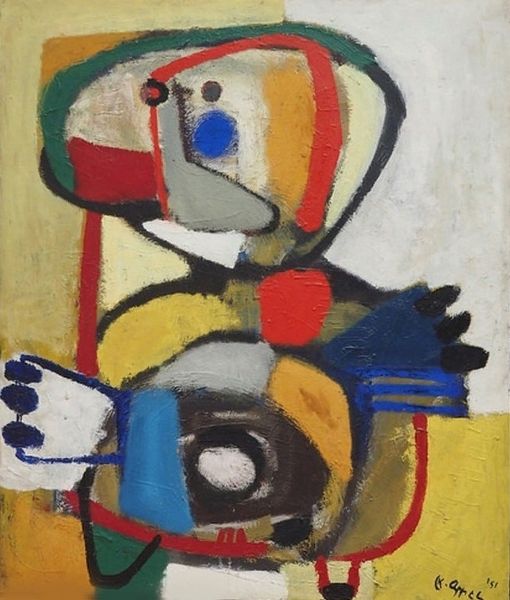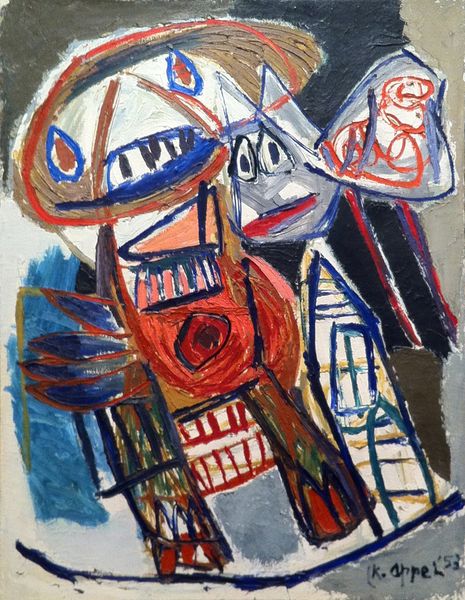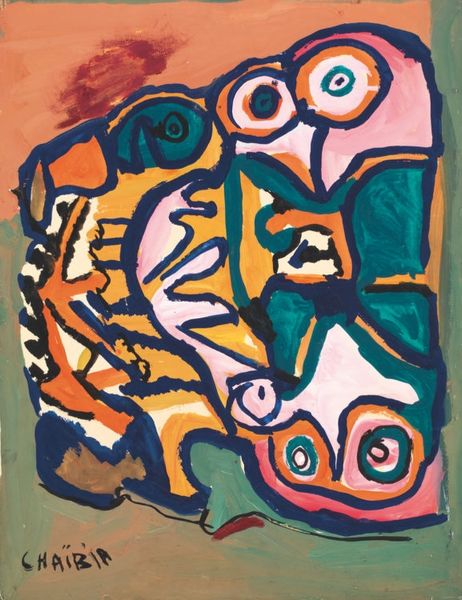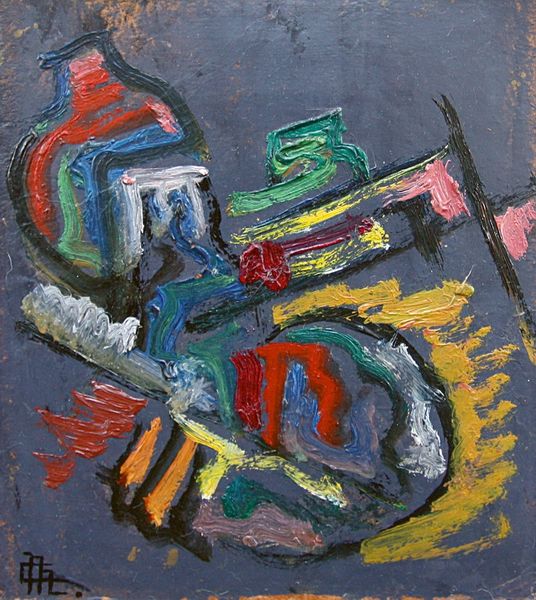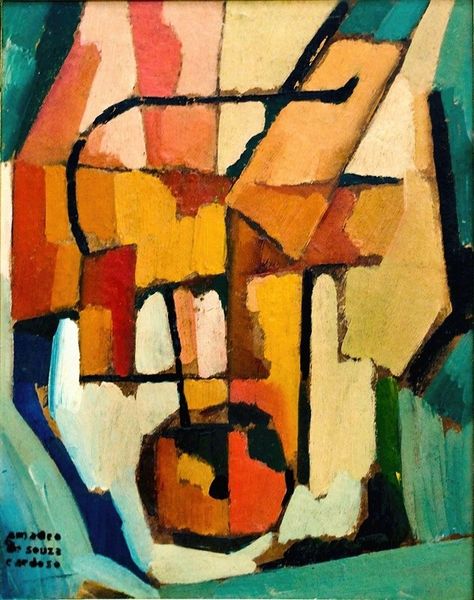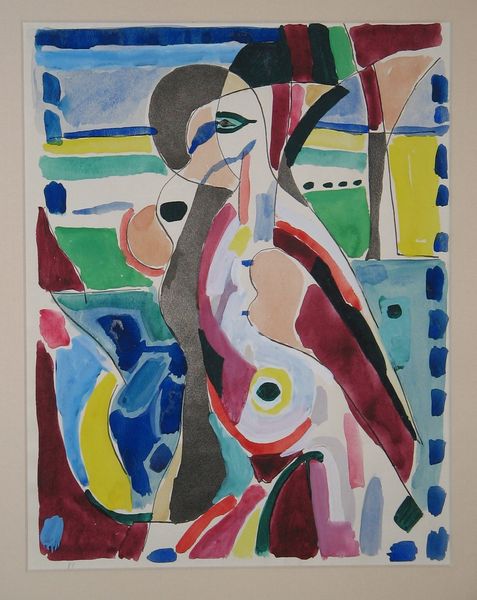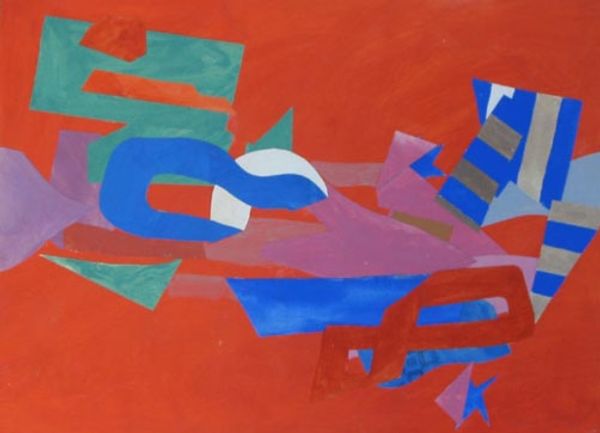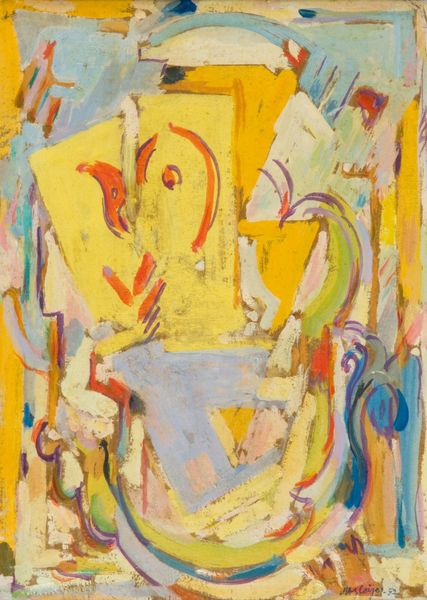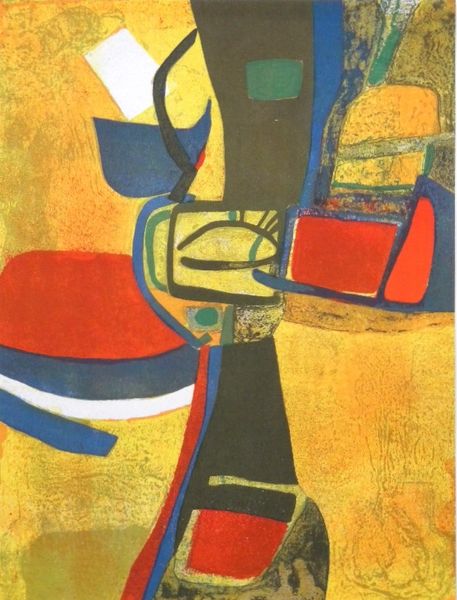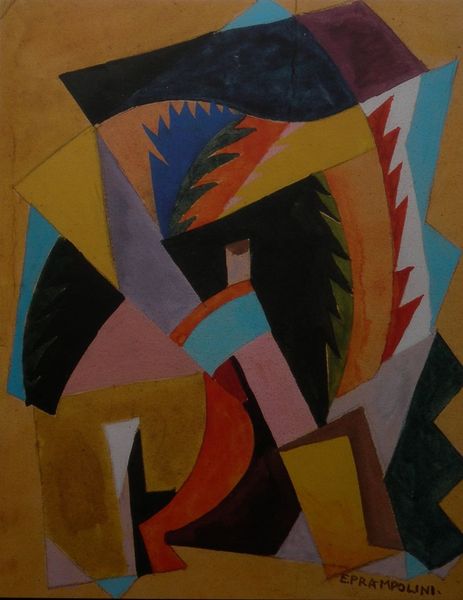
painting, acrylic-paint
#
painting
#
acrylic-paint
#
acrylic on canvas
#
abstraction
#
painting art
#
modernism
Dimensions: 50.08 x 41.9 cm
Copyright: Roy Lichtenstein,Fair Use
Curator: Wow, "The Valve." Immediately, it feels like a sort of playful chaos, a mechanical explosion contained on the canvas. There's a definite tension between the ordered stripes and the somewhat clunky, abstracted forms. What do you see first? Editor: I'm struck by the very thing you call "playful chaos," though I read it differently. Roy Lichtenstein painted "The Valve" in 1954 with acrylic on canvas. It signals the early stages of his engagement with a mode of abstraction that countered the pervasive influence of abstract expressionism, aiming to disrupt the solemnity that had solidified around the New York School. It's an era where the industrial and the mechanical starts creeping into artistic consciousness. Curator: That’s fascinating! Disruption is definitely at play here. It feels like Lichtenstein's taking apart the innards of some forgotten machine and rearranging them according to his own slightly mad logic. Look at how the colors clash—the blues fighting with the oranges, and that daring strip of red! Editor: That strip, those very colors are speaking to the burgeoning Pop Art movement, even if its articulation in Lichtenstein's famed comic strip style was still some years off. In a way, this feels like a conscious effort to make "high" art about everyday "low" subjects, echoing Duchamp's readymades but through painting. Curator: Interesting point! I like how you’re seeing a precursor of Pop, whereas I'm stuck thinking, "what does it all mean?" What does the "valve" symbolize, if anything? I find it incredibly appealing precisely because it feels like a puzzle box of sorts, daring you to figure it out while knowing full well there may not be a neat solution. It dances at the edge of meaning, then ducks back into form and color. Editor: The turn from meaning to the mechanics of representation. That makes sense within the art historical moment. However, in thinking about this piece now, perhaps a valve *is* meaning itself, a critical component determining flow. Early Lichtenstein poses a question, perhaps not resolved: is it possible to maintain criticality through something seemingly innocuous? Curator: So it is about flow, restriction, possibility and even denial! So wonderfully apt even as it withholds itself! Now I get a sense of why "The Valve" draws me into its kinetic orbit. Thanks for bringing Lichtenstein’s socio-historical frame, which certainly colors in my initial impression of it as, simply, chaotic playful. Editor: Indeed! The image starts out silent, but when one teases out how context comes to play through his chosen artistic intervention, then Lichtenstein's painting does, indeed, "flow."
Comments
No comments
Be the first to comment and join the conversation on the ultimate creative platform.
